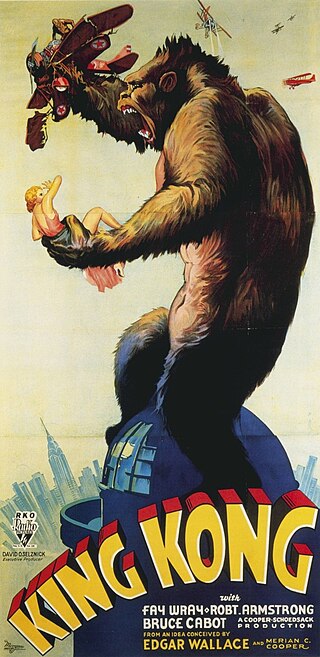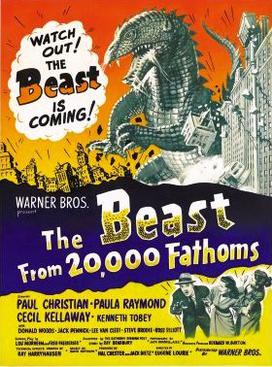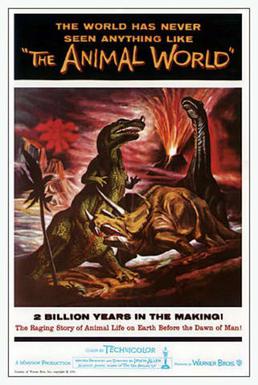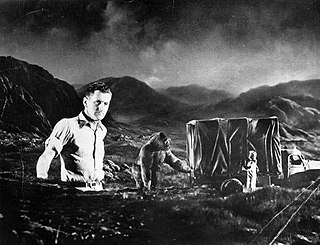
King Kong is a 1933 American pre-Code adventure horror monster film directed and produced by Merian C. Cooper and Ernest B. Schoedsack, with special effects by Willis H. O'Brien. Produced and distributed by RKO Radio Pictures, it is the first film in the King Kong franchise. The film stars Fay Wray, Robert Armstrong and Bruce Cabot. In the film, a giant ape dubbed Kong captured from Skull Island attempts to possess a beautiful young woman.

Willis Harold O'Brien, known as Obie O'Brien, was an American motion picture special effects and stop-motion animation pioneer, who according to ASIFA-Hollywood "was responsible for some of the best-known images in cinema history," and is best remembered for his work on The Lost World (1925), King Kong (1933), The Last Days of Pompeii (1935) and Mighty Joe Young (1949), for which he won the 1950 Academy Award for Best Visual Effects.

Raymond Frederick Harryhausen was an American-British animator and special effects creator who created a form of stop motion model animation known as "Dynamation". His works include the animation for Mighty Joe Young (1949) with his mentor Willis H. O'Brien ; his first color film, The 7th Voyage of Sinbad (1958); and Jason and the Argonauts (1963), which featured a sword fight with seven skeleton warriors. His last film was Clash of the Titans (1981), after which he retired.

It Came from Beneath the Sea is a 1955 American science fiction monster horror film from Columbia Pictures, produced by Sam Katzman and Charles Schneer, directed by Robert Gordon, that stars Kenneth Tobey, Faith Domergue, and Donald Curtis. The screenplay by George Worthing Yates was designed to showcase the stop motion animation special effects of Ray Harryhausen.

The Beast from 20,000 Fathoms is a 1953 American science fiction action horror film directed by Eugène Lourié, with special effects by Ray Harryhausen. The film stars Paul Christian, Paula Raymond, Cecil Kellaway, and Kenneth Tobey. The screenplay is based on Ray Bradbury's 1951 short story "The Fog Horn", specifically the scene where a lighthouse is destroyed by the title character. The film is about the Rhedosaurus, a dinosaur that is released from its frozen hibernating state by an atomic bomb test in the Arctic Circle and begins to wreak a path of destruction as it travels southward, eventually arriving at its ancient spawning grounds, which includes New York City.

The Valley of Gwangi is a 1969 American fantasy Western film produced by Charles H. Schneer and Ray Harryhausen, directed by Jim O'Connolly, written by William Bast, and starring James Franciscus, Richard Carlson, and Gila Golan.

20 Million Miles to Earth is a 1957 American horror science fiction monster film directed by Nathan Juran and starring William Hopper, Joan Taylor, and Frank Puglia. It was produced by Charles H. Schneer's Morningside Productions for Columbia Pictures. The screenplay was written by Bob Williams and Christopher Knopf from an original treatment by Charlott Knight. As with several other Schneer-Columbia collaborations, the film was developed to showcase the stop-motion animation of Ray Harryhausen.

Clash of the Titans is a 1981 fantasy adventure film directed by Desmond Davis and written by Beverley Cross, loosely based on the Greek myth of Perseus. Starring Harry Hamlin, Judi Bowker, Burgess Meredith, Maggie Smith and Laurence Olivier, the film features the final work of stop-motion visual effects artist Ray Harryhausen.

Mighty Joe Young is a 1949 American black and white fantasy film distributed by RKO Radio Pictures and produced by the same creative team responsible for King Kong (1933). The film was produced by Merian C. Cooper, directed by Ernest B. Schoedsack, and Ruth Rose wrote the screenplay. It stars Robert Armstrong, Terry Moore, and Ben Johnson in his first credited screen role. Animation effects were handled by Ray Harryhausen, Pete Peterson and Marcel Delgado.

Sinbad and the Eye of the Tiger is a 1977 fantasy adventure film directed by Sam Wanamaker and featuring stop-motion effects by Ray Harryhausen. The film stars Patrick Wayne, Taryn Power, Jane Seymour and Patrick Troughton. The third and final Sinbad film released by Columbia Pictures, it follows The 7th Voyage of Sinbad (1958) and The Golden Voyage of Sinbad (1973).
James Danforth is an American stop-motion animator, known for model-animation, matte painting, and for his work on When Dinosaurs Ruled the Earth (1970), a theme-sequel to Ray Harryhausen's One Million Years B.C. (1967). He later went on to work with Ray Harryhausen on the film Clash of the Titans (1981) to mainly do the animation of the winged horse Pegasus.
David W. Allen was an American film and television stop motion model (puppet) animator.
Marcel Delgado was a sculptor and model-maker. His technique revolutionized the stop motion film industry. He is best known for his work on the 1933 film King Kong.
Model animation is a form of stop motion animation designed to merge with live-action footage to create the illusion of a real-world fantasy sequence.

A monster movie, monster film, creature feature or giant monster film is a film that focuses on one or more characters struggling to survive attacks by one or more antagonistic monsters, often abnormally large ones. The film may also fall under the horror, comedy, fantasy, or science fiction genres. Monster movies originated with adaptations of horror folklore and literature.

The Giant Claw is a 1957 American monster film from Columbia Pictures, produced by Sam Katzman, directed by Fred F. Sears, that stars Jeff Morrow and Mara Corday. Both Sears and Katzman were well known as low-budget B film genre filmmakers. The film was released as a double feature with The Night the World Exploded.

The Animal World is a 1956 American documentary film that was produced, written and directed by Irwin Allen. The film includes live-action footage of animals throughout the world, along with a ten-minute stop motion animated sequence about dinosaurs.

Joaquín Cosío Osuna is a Mexican actor and poet. He is best known for roles such as Rubén "Mascarita" in Matando Cabos (2004), General Medrano in Quantum of Solace (2008), Eufemio "El Cochiloco" Mata in El Infierno, Ernesto Fonseca Carrillo in Narcos: Mexico (2018–2021) and Major General Mateo Suárez in The Suicide Squad (2021), among others.

Pete Peterson was an American motion picture special effects and stop-motion animation pioneer, best remembered for his work with Willis H. O'Brien on Mighty Joe Young (1949), The Black Scorpion (1957) and The Giant Behemoth (1959).
Neville Buchanan is a stop motion animator and director based in England. His style is informed by his mentor Ray Harryhausen His work has been likened to Harryhausen's predecessor Willis O'Brien with its emphasis on meticulously detailed puppets sculpted onto armatures forwarding the narrative.















